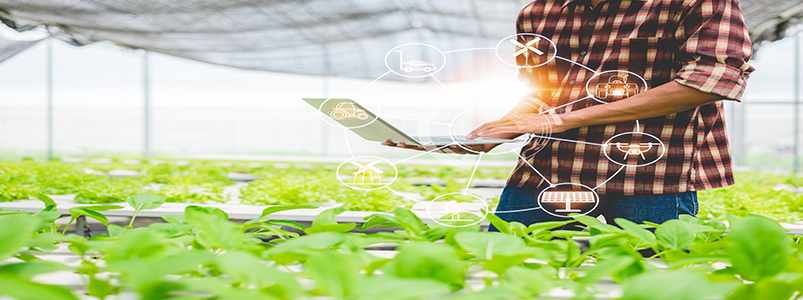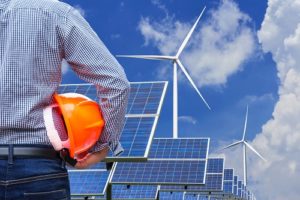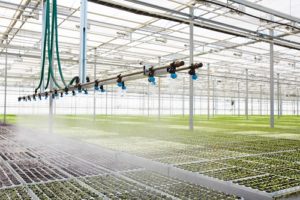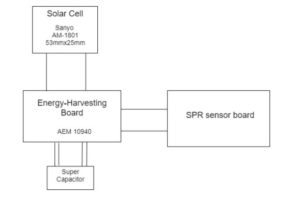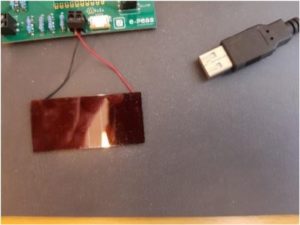Did you know that every hour on the Earth’s surface falls enough solar energy to meet the world’s energy needs for an entire year? This is a mind-blowing fact which needs to be exploited if we are to find a more sustainable way to use energy. The modern world, has rapidly begun to study renewable resources and how we can exploit energy not only from the sun, but also energy from the wind, thermal energy, kinetic energy and many other renewable and sustainable forms of energy. One highly studied process to shift our energy problem is energy harvesting. Energy harvesting is the process by which energy is derived from external sources, captured, and stored for small, wireless, autonomous devices, like those used in wireless sensor networks.
Energy harvesters provide a very small amount of power for low-energy electronics. The number of high-density networks in the world today and in the coming future is sky rocketing and we need to be able to adapt to this growth in every way, but most importantly, our energy requirements. Can you imagine having to replace or recharge billions of batteries or replace billions of cable installations?
Therefore, in this blog post we will talk about discuss the current capabilities we have with energy harvesting, and then, we will debunk a few misconceptions about energy harvesting by using the test results we have acquired by running RIIoT™ by Radiocrafts on a solar panel.
What Are The Current Capabilities We Have With Energy Harvesting?
Currently, semiconductor technology is following the trend of consistently reducing power in their operation. Every new generation of semiconductors being released operate with lower and lower power. This trend, combined with new low power radio protocols, has led to the discovery of using energy harvesting in IoT as a form of lowering conventional power consumption. In existing energy harvesting technologies today, the amount of power that can be extracted is small, however, by applying the new technology developments, it is more than enough to enable a wide range of IoT applications.
For example, using solar power panels to power an irrigation system in a small greenhouse. Additionally, these energy harvesting technologies are improving year by year. Solar panels have become much more efficient in capturing and storing energy. The amount of energy which we can generate from thermal energy is increasing as well, but most importantly, integrated circuits are now addressing ultra-low power applications which ensures optimal use of harvested energy. In IoT, sensor nodes are considered the ideal use-case for energy harvesting, so why are many people still so skeptical about energy harvesting?
Debunking Energy Harvesting Misconceptions Using RIIoT™ by Radiocrafts as an Example
There are many myths and misconceptions about energy harvesting which makes people question the feasibility of using this process in their business operations. Radiocrafts has successfully run one of our newest product lines, RIIoT™, on a solar panel in an indoor application and the results were quite impressive. Therefore, we want to debunk these myths and misconceptions by using those very test results.
1. Myth: Energy Harvesting is Expensive
Many people think that energy harvesting is an expensive design choice, but, if you look at alternative choices, you will find that the cost differences are smaller than you might think.
For example, batteries require space and some form of clip to mount and retain them. Additionally, they need to be replaced quite often.
Offline power requires an ac-dc converter which normally involves a transformer of some kind, which are quite large and costly.
Energy harvesting devices are typically small in size and have very low ownership costs compared to the alternative choices as there is no need to replace batteries or constantly supply AC power.
2. Myth: Hard to Implement in Practice
As with any changes in technologies used, adaptation is needed. However, the adaptation needed for energy harvesting, depending on what technology you use, is straight forward and simple. You will need to think about how your sensor will be exposed to whatever form of energy it is harvesting, but then, once this issue has been resolved, an application that uses energy harvesting is pretty much maintenance-free from that point onwards. It is a “fit and forget” experience. They can be fitted almost anywhere and designed to any form factor with little or no compromises.
With offline power you need to be concerned with strict regulations and take the accessibility of the device into account in addition to the power source. The exact same is true for battery-operated devices.
In our running RIIoT™ by Radiocrafts on a solar cell test, we used the following setup. The setup is simple and consists of a harvesting device (solar panel), an energy harvesting IC which converts the energy to usable voltage levels, a storage device (super capacitor), and a device that needs to be powered (SPR sensor board).
We used the following products for our test setup:
· Radiocrafts’ RIIoT Sensor Board containing the SPR module.
· Sanyo AM-1801 solar cell – harvesting device.
· E-peas AEM10940 Energy-harvesting board – energy harvesting IC which functions as an energy management subsystem.
· A super capacitor – stores electric power.
The most complicated part of the whole system was to remove all traditional power-sources from a RIIoT Sensor Board and connect it to a solar panel.
3. Myth: Harvesting Energy is Unreliable and Cannot Generate Enough Energy For Wireless Applications
Unless the sun dies (in which case we die as well) or wind and heat simply cease to exist, the supply for harvesting sunlight or wind will always be there. But of course, if you are trying to harvest energy from the sun and you place your device underground, reliability and energy generation will be an issue. The key to ensure that you are using this supplied energy optimally depends on the device design. You need to design your energy harvesting device keeping your use case in mind. You need have an appropriate sensor design and place it intelligently as well. In addition to this, you need a suitable power-management IC and capacitive storage.
Using the products listed above in our RIIoT™ test results, we achieved impressive results. Using the sensor running and a temperature/humidity reading example, we set the example code to read the sensor every 30 seconds and configured the device as a sleepy device. The board was powered from a 2.5V source and the dynamic current consumption was measured during sensor reading, transmission, and reception. Based on this measurement, the current used during a sensor reading + radio transmission is 0.41mA during a one second period. If this is done every 30 seconds, it gives an average current consumption of 13.7µA. Adding in the contribution from sleep current of maximum 2µA, the overall current consumption is 15.7µA which is enough energy to power the sensor application.
4. Myth: It Will Impact the Users Experience Negatively
Wireless technologies are still a new phenomenon even today. Imagine a device which does not need to be plugged in somewhere or which never needs its batteries to be charged or changed. You simply setup the device with a solar panel, an energy harvesting IC, and an energy storage supercapacitor, and voila! You are finished designing your maintenance-free, fit and forget device! Now couple this with an already ultra-low-power electronic and you pretty much have a product that can always be on, always up to date, and always delivering the information which you need. There are so many ways to scavenge energy from the environment that an energy harvesting device, which is autonomous in nature, simply needs to be exposed to the environment to start generating energy.
To read more about RIIoT™ by Radiocrafts, click here.
To read the “Running RIIoT™ on a Solar Panel” test results, click here.
What to Take Away From This?
Energy harvesting is rapidly becoming an important part of sustaining the IoT. Although our current capabilities with energy harvesting are limited, new innovations and studies are slowly revealing the great importance which energy harvesting will have in the future. Not only does it reduce the burden on power generation in general, it also reduces our reliance on batteries, which present their own carbon footprint. As the number of IoT nodes increases to the many billions, we can expect energy harvesting to become even more integral to tomorrow’s connected world.

